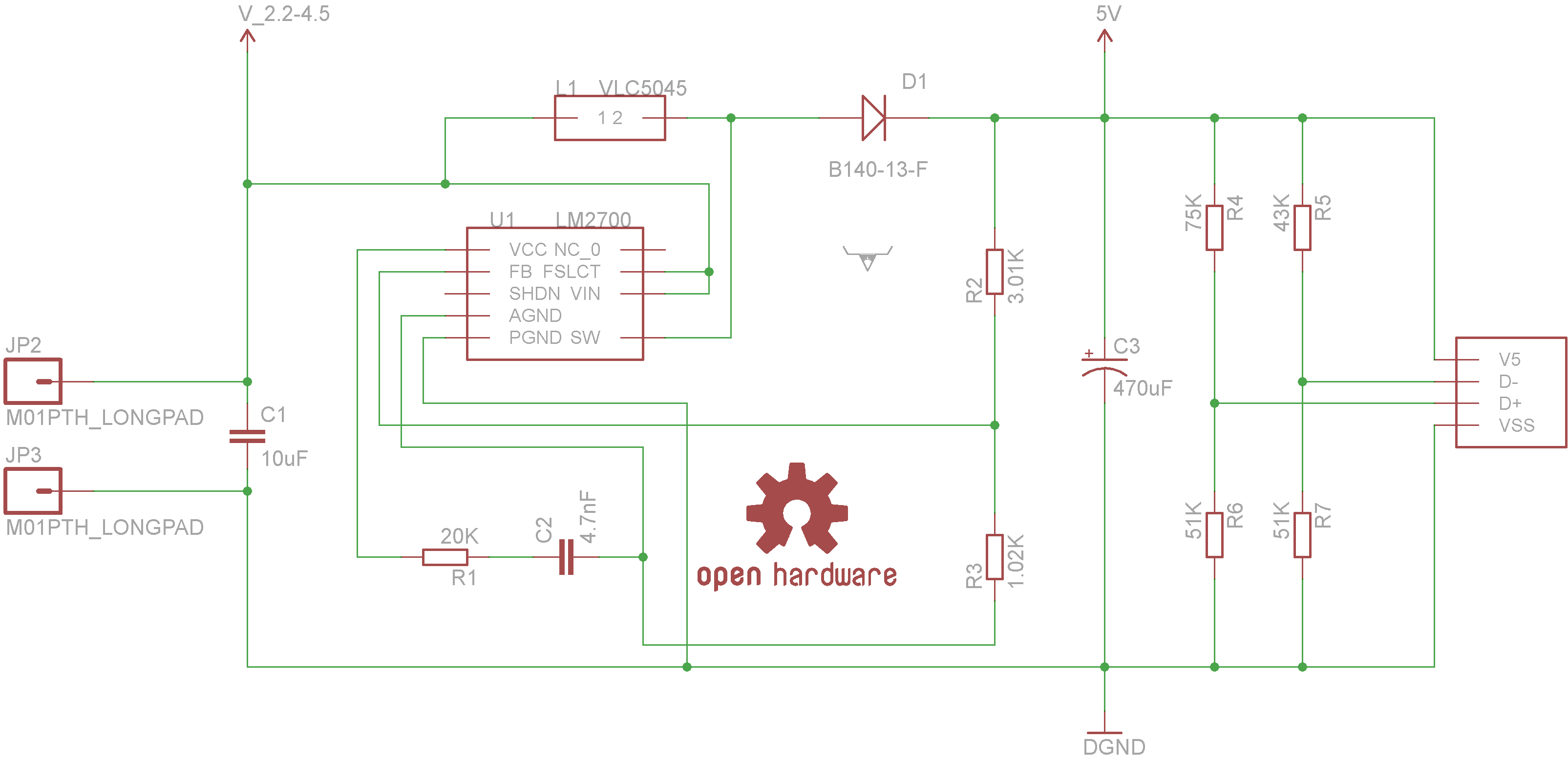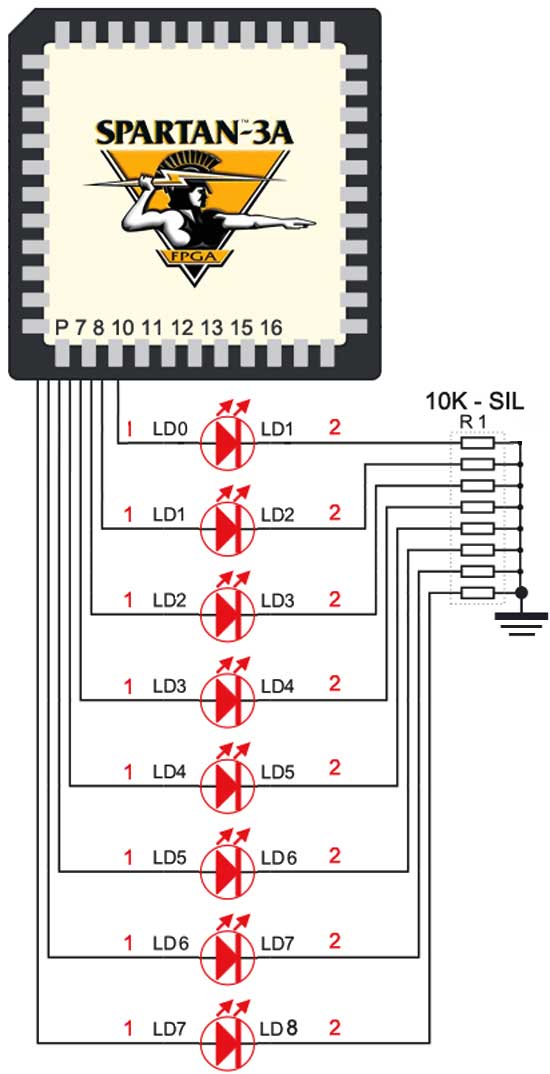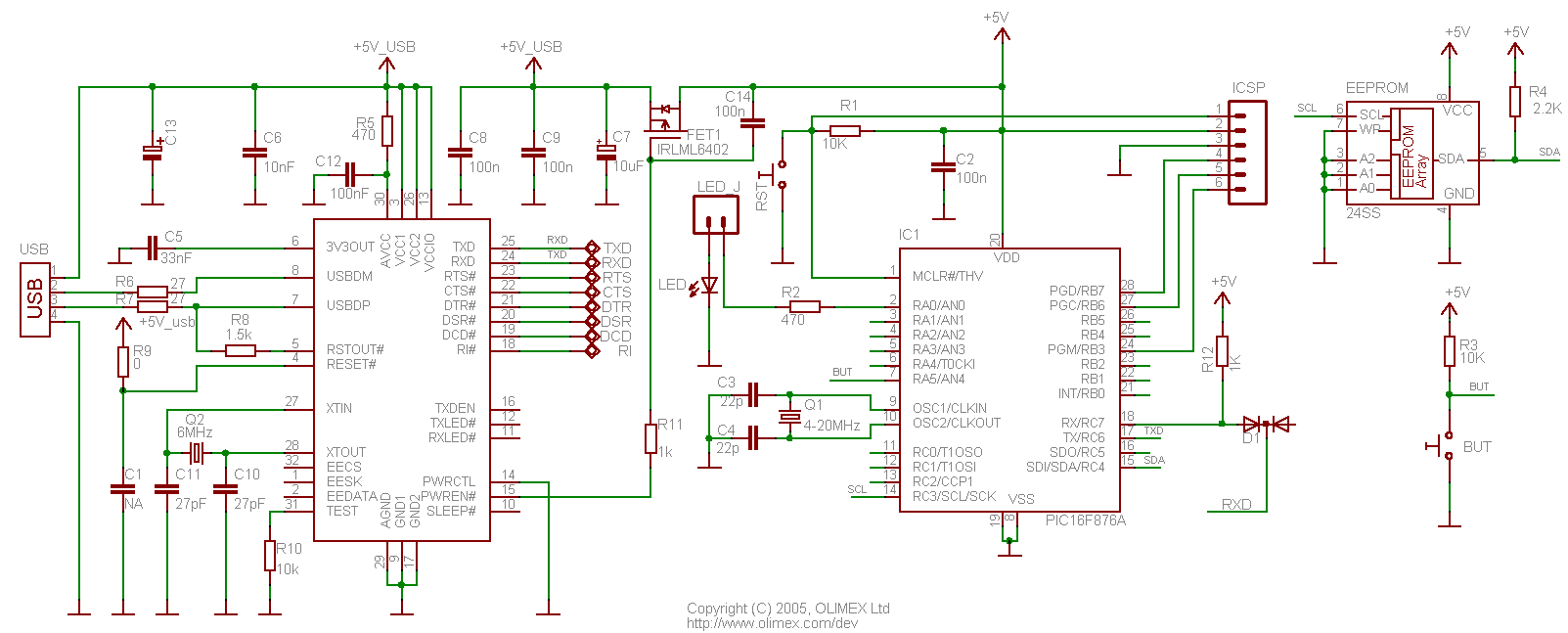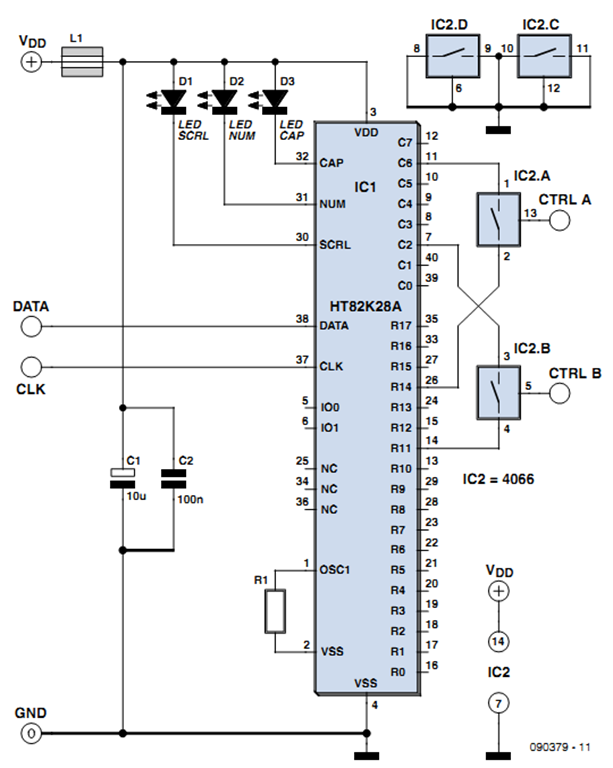
OpenLx USB DMX interface

This circuit is designed to produce DMX output for entertainment lighting from a PC. It offers flexibility in circuit configurations. By opting for no isolation, the setup requires only a PIC microcontroller and a standard RS-485 driver, with an estimated total cost of less than £10. For a slightly higher cost, full galvanic isolation can be implemented to protect the PC, or a keypad can be added for standalone operation. Additionally, with the incorporation of I2C memory, scenes and test sequences can be programmed on a PC and stored for later playback.
The DMX output circuit serves as an interface between a PC and DMX-compatible lighting fixtures, leveraging the DMX512 protocol commonly used in entertainment lighting systems. The core components include a PIC microcontroller, which executes the control logic and communicates with the RS-485 driver. The RS-485 driver is essential for converting the microcontroller's TTL-level signals into differential signals suitable for long-distance transmission, thus ensuring robust communication over extended distances typically encountered in stage lighting setups.
In configurations without isolation, the circuit maintains a straightforward design, minimizing costs and complexity. However, it is crucial to understand that this approach may expose the PC to potential electrical noise and voltage spikes from connected devices. To address this concern, implementing galvanic isolation is advisable. This can be achieved using opto-isolators or isolation transformers, which separate the PC's circuitry from the lighting control signals, providing a protective barrier against surges and ensuring the integrity of the PC's operation.
The option to add a keypad enhances the circuit's functionality, allowing users to operate the DMX system independently from the PC. This feature is particularly useful in scenarios where quick adjustments are necessary, such as during live performances. The keypad can be interfaced with the microcontroller, enabling direct commands to be sent to the DMX output without the need for a computer.
Furthermore, the integration of I2C memory allows for the storage of programmed scenes and test sequences. This capability enables users to create complex lighting arrangements on a PC, which can then be recalled and executed at any time. The stored sequences can include various lighting parameters such as intensity, color, and timing, providing a versatile tool for lighting designers and operators.
Overall, this circuit design is a cost-effective and flexible solution for generating DMX output, accommodating various operational needs while ensuring reliability and ease of use in entertainment lighting applications.This is yet another circuit for producing DMX output for entertainment lighting from a PC. Designed with flexibility in mind, a range of circuit configurations are possible. Opting for no isolation requires just a PIC microcontroller and a standard RS-485 driver, with an approximate total cost of less than £10, while for a few pounds more, fu ll galvanic isolation can be implemented to provide protection for the PC, or a keypad added to allow for standalone operation. With the addition of I2C memory, scenes and test sequences can be programmed with a PC and stored for playback later.
🔗 External reference
The DMX output circuit serves as an interface between a PC and DMX-compatible lighting fixtures, leveraging the DMX512 protocol commonly used in entertainment lighting systems. The core components include a PIC microcontroller, which executes the control logic and communicates with the RS-485 driver. The RS-485 driver is essential for converting the microcontroller's TTL-level signals into differential signals suitable for long-distance transmission, thus ensuring robust communication over extended distances typically encountered in stage lighting setups.
In configurations without isolation, the circuit maintains a straightforward design, minimizing costs and complexity. However, it is crucial to understand that this approach may expose the PC to potential electrical noise and voltage spikes from connected devices. To address this concern, implementing galvanic isolation is advisable. This can be achieved using opto-isolators or isolation transformers, which separate the PC's circuitry from the lighting control signals, providing a protective barrier against surges and ensuring the integrity of the PC's operation.
The option to add a keypad enhances the circuit's functionality, allowing users to operate the DMX system independently from the PC. This feature is particularly useful in scenarios where quick adjustments are necessary, such as during live performances. The keypad can be interfaced with the microcontroller, enabling direct commands to be sent to the DMX output without the need for a computer.
Furthermore, the integration of I2C memory allows for the storage of programmed scenes and test sequences. This capability enables users to create complex lighting arrangements on a PC, which can then be recalled and executed at any time. The stored sequences can include various lighting parameters such as intensity, color, and timing, providing a versatile tool for lighting designers and operators.
Overall, this circuit design is a cost-effective and flexible solution for generating DMX output, accommodating various operational needs while ensuring reliability and ease of use in entertainment lighting applications.This is yet another circuit for producing DMX output for entertainment lighting from a PC. Designed with flexibility in mind, a range of circuit configurations are possible. Opting for no isolation requires just a PIC microcontroller and a standard RS-485 driver, with an approximate total cost of less than £10, while for a few pounds more, fu ll galvanic isolation can be implemented to provide protection for the PC, or a keypad added to allow for standalone operation. With the addition of I2C memory, scenes and test sequences can be programmed with a PC and stored for playback later.
🔗 External reference
Warning: include(partials/cookie-banner.php): Failed to open stream: Permission denied in /var/www/html/nextgr/view-circuit.php on line 713
Warning: include(): Failed opening 'partials/cookie-banner.php' for inclusion (include_path='.:/usr/share/php') in /var/www/html/nextgr/view-circuit.php on line 713





